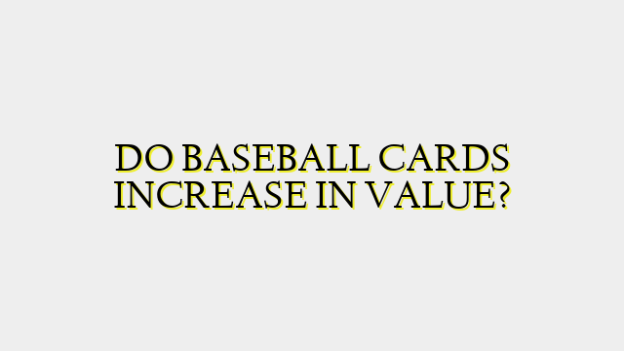The value of baseball cards can increase significantly over time depending on several factors. Generally, the value of a card is dependent on the player featured, the year the card was produced, the physical condition or grade of the card, and the wider marketplace demand. By accounting for these key elements that determine worth, some baseball cards have the potential to substantially rise in value as the years pass.
One of the primary determinants of a card’s value is the player featured and their career achievements and accolades. Cards depicting star players who went on to have Hall of Fame careers tend to appreciate the most in value as their on-field success becomes cemented in baseball history. For example, rookie cards of legends like Mickey Mantle, Babe Ruth, or Honus Wagner that were in mint condition have sold for millions of dollars due to their historical significance and the iconic status of those players. Even cards of recently retired superstars like Mike Trout or Clayton Kershaw that performed at an elite level for over a decade could be worth thousands in the decades to come as their careers are reflected upon.
In addition to the player, the year the card was printed plays an important role in its potential value growth over time. Generally, the older the card, the more scarce it becomes and the greater collectors are willing to pay due to rarity. This is because card manufacturing techniques were less advanced decades ago and production runs were smaller, leading to fewer surviving copies in top condition today. As a benchmark, pre-war cards from the early 20th century or even the 1950s are more likely to exponentially increase to six or even seven figures given sufficient preservation. Cards from the late 80s or 90s marked the height of production so may see more modest appreciation all else being equal. Even late 80s rookie cards of future Hall of Famers could grow to thousands due to their historical context.
The physical state and condition of individual baseball cards also heavily dictates their valuation and price trajectory. On a scale of 1-10, cards graded Near Mint-Mint (NM-MT 7-9) that are crisp and flawless are far more scarce and prized by collectors than well-worn Used (UG-VG 2-4) copies. Cards professionally graded by authentication companies in pristine condition have the highest long-term value growth potential, while heavily played or damaged ones may even decline in worth. Therefore, careful storage and preservation is important to maximize any rise in value over generations. The upkeep of cards can influence their assessment almost as much as the player or year.
Lastly, the wider market demand also impacts the value increase of baseball cards. When interest rises in the hobby and collection due to events like anniversaries or an exciting playoff race leading to new fans, card prices tend to increase across the board. Scarcer vintage pieces are especially vulnerable as a limited supply meets growing demand. Conversely, in times of less enthusiasts, value may stagnate or even dip until renewed collector passion. Constant fluctuations in interest levels can cause short-term pricing volatility that smooths over the long haul as nostalgia ensures the market stays vibrant.
By carefully considering the player career achievements, print year, exact card condition, and collecting trends – some baseball cards do have exceptional potential to vastly raise in monetary worth stretching into multiple generations. While apprecIation cannot be guaranteed, high-grade vintage rookies of all-time greats preserved expertly could deliver six or even seven-figure returns given the scarcity of surviving pieces of baseball history in pristine condition. With patience and diligence from collectors, the value growth trajectories of special cardboard can far outpace traditional investments over decades.

